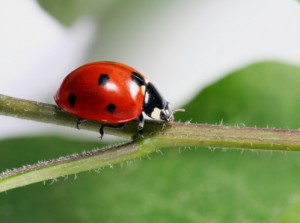“Browse through any respectable science journal and you may read some articles claiming benefits and others finding faults with organic food. There is no consensus about it. As a consequence, we cannot make strong statements about organic food being “superior” to conventionally grown food, at least as far as nutrition and consumer safety are concerned.”
I would not really bet on the comparative nutritional value or contaminant level of any given batch of “organic” vs “conventional” food because the variables are so site-specific, crop-specific, and season-specific. Cultivation, processing, handling and environmental conditions vary widely for both organic and standard products.
However, I have to tell a story.
I have never had a lab analysis done of the nutrient composition of my own organic produce. However, I have never seen or tasted better beets, corn, beans, squash, tomatoes, potatoes, bell peppers, cabbages, carrots, etc. than my own bio-intensive organic garden once produced.

Lady Bug
Despite initial disappointments, in my third or fourth year of subsistence gardening I was producing satisfactory produce  comparable to what I could get at market. I was experimenting with every known method of organic and biological cultivation. By the sixth or seventh year my vegetables were incredible. Unbelievable. People were often dumb-struck by the appearance, fragrance, texture, and taste of my crops. I am satisfied, without a lab analysis, that their nutritional value had become quite superior to anything money could buy.
comparable to what I could get at market. I was experimenting with every known method of organic and biological cultivation. By the sixth or seventh year my vegetables were incredible. Unbelievable. People were often dumb-struck by the appearance, fragrance, texture, and taste of my crops. I am satisfied, without a lab analysis, that their nutritional value had become quite superior to anything money could buy.
It was known to me that epidemiological studies had shown that the local “Hillbilly” population on the Cumberland Plateau tended to be deficient in things like boron, manganese, magnesium and zinc and this was suspected to be caused by some corresponding soil deficiencies.
Supplementing the boron and manganese in my compost had an immediate and profound effect on my corn and potatoes. The corn leaves and stalks turned from yellowish green one year to a deep emerald color the next (the seed of the earlier crop was used for the following one) and they now towered above my head. The potatoes (also from the same parent stock) doubled in size above and below ground and were free of the “flea beetles” that turned the previous year’s top growth to green lace.
I gradually added additional trace minerals to my compost which was made mainly of mixed hardwood forest litter, wild herbs, garden wastes, and local manures. I didn’t turn, dig, hoe or rake my permanent raised beds, rows or hills after the third or fourth year but simply applied year-old compost to the top of the soil in quantities sufficient to smother most weeds until my intermixed crops closed ranks and created their own micro-climates in the private underworld between their foliage and the soil.

Living Soil
The life in the soil became my main preoccupation, and after several years I could plunge my arm straight down into the soil to the elbow. I cultivated the worm population to very high levels and introduced milky spore, ladybugs, preying mantis and parasitic wasps. I applied less and less rotenone, pyrethrin, etc. in order to avoid harming my beneficial insects, lizzards, toads, etc. Eventually the only insect problem I had was the squash stem borers but they were easy enough to remove “surgically” with my pen knife.
As the garden meshed all together into a sort of fruit, flower, herb and vegetable-bearing jungle paradise, the intense colors, textures, shapes and smells of the crowded, intermixed mass of plants created a sort of sensory pulsation or undulation that could be nearly overwhelming.
I am pretty sure that no satisfactory scientific studies have ever been done on a garden such as that and that agricultural scientists are profoundly ignorant (at least in first-hand knowledge), of such a climax ecosystem. Incredibly diverse and complex, self-maintaining, micro-climate generating ecosystems like this probably once existed in the “wild” before the fist ancient forests were felled and the first prairie sods were turned upside down. Now they are known only to a few of us old, gray-bearded naturalists whom nature initiated into some small mysteries of her occult world.
But my main point, which you probably will be unable to believe just on my say-so, unfortunately, is about nutrition.
As a result of living almost entirely from that garden and the wild plants in the area for a number of years I grew about an inch taller and gained enormous strength and vitality. I was transformed from a rather sickly, medium-statured weakling into a kind of big Paul Bunyan who could lift 400 lb logs onto my giant saw buck. Though I left those mountains 30 years ago and have spent most of the time since in cities and towns and corporate office suites and have never worked out in gyms or anything like that, I still have the near-miraculous state of health which that garden bestowed on me. Whereas before my gardening days neither I nor anyone else ever thought of me as a “big” man, since the garden period everyone calls me a “big guy” and I have to wear XXL clothes. Though I only weigh 190, my shoulders are very broad and my chest and neck are big despite my near-total lack of any exercise at all.
The explanation? I suspect that the super-nutrition which I no doubt received 30 years ago actually transformed something in my basic epi-genetic makeup.

Mad science experiments…
So there to your chemical engineers, lab-coated pundits, and science writers who think they know something about deep ecology and human nutrition.
Aside from the nutrition issues there are some important distinctions between 1) organic food (produced with natural, sustainable, and environmentally safe methods), 2) conventionally grown food (which almost always involves the application of synthetic chemicals to the soil, the air, the surrounding ecosystems, and to the food itself), and 3) genetically engineered food crops that are released into the natural ecosystem. There is sufficient evidence to suggest that synthetic pesticides and other chemicals can harm the soil, the environment, and human health. The burden must fall on manufacturers to prove the safety of their products beyond a reasonable doubt, with research as rigorous and comprehensive as that required for pharmaceuticals, before they are placed on the market and introduced into the biosphere. This is especially true of genetically engineered products where chunks of DNA are cut and pasted between different species or even between animals and plants–plants which may then cast their new synthetic, hybrid DNA to the four winds to spread right around the planet.
These synthetic chemicals and DNA molecules can and do wind up in the blood, the guts, and the delicate brains of human infants and children.
Poor Richard














 Church of Reality
Church of Reality Critiques Of Libertarianism
Critiques Of Libertarianism P2P Foundation
P2P Foundation Stanford Encyclopedia of Philosophy
Stanford Encyclopedia of Philosophy The Stone
The Stone